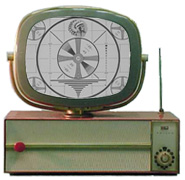We Watched Television

Television was born in the 1930s, went through experimental stages in the 1940s, was defined in the 1950s, and refined in the 1960s. In 1950, there were about 3 million television sets. The broadcast protocols were not standardized so the FCC shut the industry down until a single standard was agreed upon, which it was in 1951. The result was that in 1952 alone Americans bought 17 million television sets. The early days of television were the later days of radio, and some shows translated well to the new medium and some didn’t, even some of the biggies. Ventriloquist Edgar Bergen, for example, was not as successful on the small screen as he was on the magic speaker because he moved his lips when Charley McCarthy talked. Another was Mel Blanc, "the man of a thousand voices". Not particularly photogenic, nor charismatic, and having honed his art behind a microphone rather than on a stage, he was more of a curiosity than a star.
So the 1950s was a decade of experimentation to find what worked and what didn't, and as a result we saw a lot of junk. Nevertheless, television grew into a young adult, and by 1960 there were 85,000,000 television sets in operation.
The single factor that would allow television to reach its full potential, which was not widespread in the 1950s, was color. From the grandeur of the western skies on Bananza to the simplicity of Mickey Mouse and Goofy, color added the missing element that allowed full enjoyment of a medium of sight. Though color telecasting had begun in 1951 after standarization, color sets were expensive, complex and unreliable, and most people adopted a "wait and see" attitude.
But as the industry moved into the 1960s, reliability went up and prices went down. The stations were by then broadcasting most of their original programming in color, and the United States was now fully into the post World War II prosperity boom. As a result, Americans decided it was time to buy a new television set. By 1970, there were 231 million sets operating in this country, the greater portion of them color.
Here are some of the shows we watched.
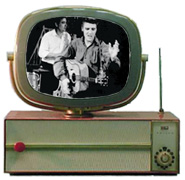

Ed Sullivan (1948-1971) "Your Shew of Shews". Those of us who had to go to church on Sunday nights mostly missed the Ed Sullivan hour. But on Friday, September 7, 1956, when I came home from school, I went straight to bed, claiming illness. My mother wasn’t worried because I wasn’t “running a temperature.” But I still didn’t feel like I could get out of bed all day Saturday, September 8. And I didn’t go out with the guys on Saturday night. Now my mother was worried. Sunday morning, September 9, I didn’t have to go to church. I stayed home in bed. My mother said that if I weren’t better by Monday, we would go to the doctor. Such a mysterious ailment, what with no temperature and all. Sunday night the family left me home alone and went to Sunday evening services without me. At promptly seven o’clock P.M. my mysterious ailment all of a sudden left my body, and I walked into the living room, turned on Ed Sullivan, and watched the man who, up to that moment, I had never seen, only heard. I watched in awe as Elvis Presley sang “You ain’t nothin’ but a hound dogga, cryin' all the time.” It took two weeks of planning and three days of brilliant acting to get me to that point, but I pulled it off. Needless to say, the next day I felt great and went on to school.
Omnibus (1952-1959, afternoon) refined culcha. While Alistair Cooke offered reflections in a non-hurried pace on the cultural, historical and artistic heritage of American society and other aspects of American life rarely covered on television, I was out playing touch football.
The Colgate Comedy Hour Variety Show (1950-55) Hosted by some of the greats who were making the move from radio and Vaudeville to television: Eddie Cantor, Abbot and Costello, Martin and Lewis, Bob Hope, Donald O’Connor, Ray Bolger, Jimmy Durante.
What's My Line? (1950-1967) John Daly, the host, and regular panelists Dorothy Kilgallen, Arlene Francis, and Bennett Serf. Sometimes very clever, always very sophisticated. Daly and Serf wore suits and bowties, the ladies their evening attire. Along the way, some guest panelists included Steve Allen and Ernie Kovacs. I swear I remember Ogden Nash as a guest panelist, though I can find no record of it. One of the sponsors was Stopette Deodorant, and in those days there was no such thing as a remote with a mute button.
Jack Benny (1950-1965) With Rochester (Eddie Anderson), announcer Don Wilson, and Irish tenor Dennis Day. Mel Blanc was heard both as the engine of Jack's Maxwell automobile and seen as Professor Le Blanc, Jack's long-suffering violin teacher.
Walt Disney Presents (1954-1983) Tinkerbell throwing stardust over a black and white castle. Mickey and Donald in shades of living gray. Davy Crockett with Fess Parker and Buddy Ebsen. We watched in awe as Walt gave us weekly updates on the progress of construction of his dream, Disneyland, which was unlike anything anyone had ever envisioned before. It opened in 1955. The television show was reincarnated in 1961 as Walt Disney's Wonderful World of Color. Walt Disney died December 15, 1966.
Bonanza (1959-1973) The Cartwrights on the Ponderosa. Quick, what was Hoss's first name. Give up? Of course you do. It was Eric. And he was just a big galoot, right? Wrong. Dan Blocker had a master's degree in drama from Sul Ross University.
Candid Camera (1948-) The Alan Funt/Durwood Kirby original was the best of the bunch that would come later. Today, litigation-happy America would never tolerate some of the earlier stunts. “Smile, you’re on candid camera.” “Smile, yourself. Here’s a subpoena.”
Maverick (1957-1962) James Garner as Bret Maverick. Garner got bored with it and the show started downhill. Brother Bart (Jack Kelly) and Cousin Beau (Roger Moore) couldn’t save it.
Alfred Hitchcock Presents (1955-1965) There’s this guy who steals this money, see. He puts it in a safe deposit box under a fictitious name and hides the key in a safe place. He turns himself in, see. Serves his time in prison. When he gets out, the statute of limitations is up, so the money belongs to him. Seven years of his life has passed but it’ll be worth it because now he’s rich, see. So he goes and fetches the safety deposit box key. It’s still there where he hid it (careful planning pays off). He goes to get the money from the safe deposit box, see. But he can't remember the fictitious name he gave the bank when he rented the box. It wasn't until many years later, while watching this episode in a rerun, that I asked myself, "Hey, who made the payments on the safe deposit box while the guy was in jail?"
Mister Ed (1961-1965) A horse is a horse is a horse, of course. A pro baseball pitcher (Don Drysdale) pitching to a horse with a bat in his mouth was considered funny stuff at the time.
The George Gobel Show (1954-1960) “Lonesome George” Gobel’s show was the first television show broadcast in stereo. Problem was, there weren’t any stereo receivers to pick it up. Well, I’ll be a dirty bird.
Gene Autry Show (1950-1956) Cowboy Gene Autry developed “The Cowboy Code”:
1. A cowboy never takes unfair advantage, even of an enemy.
2. A cowboy never betrays a trust.
3. A cowboy always tells the truth.
4. A cowboy is kind to small children, to old folks, and to animals.
5. A cowboy is free from racial and religious prejudice.
6. A cowboy is always helpful, and when anyone's in trouble, he lends a hand.
7. A cowboy is a good worker.
8. A cowboy is clean about his person, and in thoughts, word, and deed.
9. A cowboy respects womanhood, his parents, and the laws of his country.
10.A cowboy is a patriot.


I Love Lucy (1951-1961) You simply didn’t miss it. That’s all there is to say. You made sure you were home on Monday night. Period. There is one downside to this show. Desi Arnaz is credited with developing the hideous business known as a “laugh track”, which allowed hoards of future unfunny shows to pretend to be funny. It continues to this day. Many shows are advertised as “filmed before a live audience”, but that doesn’t mean that all the laughs, or for that matter any of the laughs, come from that audience. Most laughs still come from a laugh track.
Sky King (1953-1954) Western action from an airplane.
Tales of Wells Fargo (1955-1962) Dale Robertson as Jim Hardie, Wells Fargo special agent.
Ann Sothern Show (1958-1961) Set in an office. A mostly blue-collar audience couldn’t relate.
Andy Griffith Show (1960-1968) When Barney (Don Knotts) left in 1965 the show began its decline. Gomer and Goober just couldn't carry the weight.
Ben Casey (1961-1966) One of the first medical drama shows. Competed with Dr. Kildare.
Father Knows Best (1954-1963) Well, maybe he did, and maybe he didn’t.
Peter Gunn (1958-1961) Classy detective show. Excellent writing and acting. Music by Henry Mancini to complete the package. Peter Gunn’s cool, cerebral style contrasted with the stereotypical loose-cannon private detectives of the day. A modern remake might go over well, except that I can’t think of anyone good enough to step into the shoes of Craig Stevens (Gunn), Lola Albright (Edie), Herschel Bernardi (Lieutenant Jacoby), and Hope Emerson (Mother). The show was cancelled when Stevens and CBS argued over some of the show's content and Stevens walked out.
George Burns and Gracie Allen Show (1950-1958) Way ahead of its competition,
though the show didn’t age well and reruns are rare. Gracie Allen had brilliant
timing and George Burns, whom we all regard as a comedian, was actually at his
best as her straight man.
George: Gracie, what day is it today?
Gracie: Well, I don't know.
George: Why don't you look at that newspaper in your hand.
Gracie: Oh, George, that won't help. It's yesterday's paper.
George: Say goodnight, Gracie.
Kukla, Fran and Ollie (1947-1957) Sock puppet kids show came on after school.
The Outer Limits (1963-1965) Twilight Zone wannabe. Do de de do, do de de do.
To Tell The Truth (1956-1967) Host Bud Collyer and panelists Orson Bean, Kitty Carlisle, Peggy Cass, and Tom Poston. Johnny Carson was an early guest panelist, as was Merv Griffin. Lighter than “What’s My Line?”, it was a fun show in its own right.
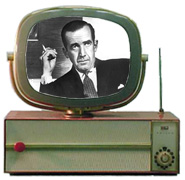

See It Now (1951-1957) documentary series starring chain-smoking Edward R. Murrow (who died of, yep, lung cancer). The show made a successful transition from radio where Hear It Now starred Fred W. Friendly, who was managing editor on Murrow's show. See It Now once broadcast a session of the Arkansas General Assembly. Small stuff when you consider that this program is credited with reversing the "Red Scare" paranoia begun by Senator Joseph McCarthy.
You'll Never Get Rich (1955-1959) Phil Silvers as spastic Sergeant Ernest Bilko.
Wyatt Earp (1955-1961) starred Hugh O’Brian as the namesake hero in the very first (beat Gunsmoke to the airwaves by four days) adult western.
Bob Cummings Show (1950-1959) like Dick Clark, Bob Cummings aged well and the ladies went for him. He played a fashion photographer so guys saw some cheesecake. Well, at least as cheesecakey as could be done in the 1950s. (STOP! I think you're going to LIKE this picture!)
Hawaiian Eye (1959-63) detective series set in Honolulu. Cast members included Robert Conrad, teen heartthrob (for the girls) Troy Donahue, and teen heartthrob (for the boys) Connie Stevens.
Make Room For Daddy (1953-1965) Rusty gave us hope that we might one day be able to say what we felt without getting popped in the mouth.
Many Loves of Dobie Gillis (1959-1963) Dwayne Hickman as Dobie. The first show to feature a beatnik and therefore the first to legitimize their existence. Maynard G. Krebbs was played by Bob Denver, who later on got stuck on some island somewhere.
McHale's Navy (1962-1966) Tim Conway in top form.
Truth Or Consequences (1950-1958) was another show that made the move from 1940s radio to 1950s television. Host Bob Barker asked contestants trick questions and when they failed to answer correctly they had to pay the consequences. Occasionally clever.
The Red Skelton Show (1951-1971) America’s truly great clown. This show was a “don’t miss”. Filmed before a live audience, the laugh tracks have been used for a lot of boring sitcoms since. In an interview in his later years, Red was questioned about maybe going for cheap laughs in his final years on the air by adding uncustomary sexual enuendo. Red responded, "I changed the material because my audience was changing. I was on the air twenty years. The same stuff that works for fourteen year olds doesn't work for thirty four year olds." That could be the reason a lot of us stuck with him until the end.
Cheyenne (1955-1963) big bruiser Clint Walker always found a way to take his shirt off and get into a fight.
Sugarfoot (1957-1961) wimpy Will Hutchins always found a way to walk into a manly bar and order sarsaparilla.
Texaco Star Theater (1948-1953) with Milton Berle. Incarnation number 2 was the Buick Milton Berle hour 1953-1956, and the third was the Kraft Music Hall starring Milton Berle (1958-1959). Berle was one of the early comic geniuses who earned the title "Mister Television".
64,000 Dollar Question (1955-1958) hosted by Hal March. Jack Benny once appeared. He quit after only one question and took home $64.00 because he was so afraid of losing it. His category was violins. Dr. Joyce Brothers won the $64,000 prize on the subject of boxing. When it was revealed that contestants were coached, the entire quiz show genre died a speedy death.
The Rifleman (1958-1963) I had high hopes for this one but the hero turned out to be a wimp and I lost interest quickly. ‘Gee, pa, are you gonna shoot that bad guy?” “No, son, I’ll leave my sawed-off, semi-automatic, lever-action, oversized pump-lever, self-cocking, spring-loaded, auto-loading Winchester carbine at home and I’ll go see if I kin talk him out of robbin' that bank.”
The Fugitive (1963-1967) good writing, great acting (on the part of David Janssen) and a liberal sprinkling of guest stars kept interest high right up to the final episode. This show was the very first to feature the concept of a "big finale", and The Fugitive's big finale was, to that date, the most watched television show of all time.
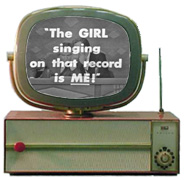

I've Got A Secret (1952-1967) In reruns, I see Garry Moore and Bill Cullen constantly puffing on a cigarette. I hate to keep bringing this up, but both died of lung disease. Nice guy Bill Cullen, cute Betsy Palmer, curmudgeon Henry Morgan, and former Miss America Bess Myerson were perfectly balanced trying to guess a guest’s secret. One guest couple was a Mr. and Mrs. Armstrong, whose secret was that their son Neil had just entered the astronaut program. Moore commented, “Say, wouldn't it be something if your son turned out to be the first man on the moon?"
Wagon Train (1957-1965) Eight years on the trail and they never made it to Oregon.
Gillette Calvacade of Sports 1946-1960. Despite the implication of a multi-sport show, the only sport covered was boxing.
The Millionaire (1955-1960) John Beresford Tipton, a reclusive billionaire, sent his right-hand man, Michael Anthony, out into the world to play chess with human beings by anonymously giving some poor soul a cool tax-free million bucks each week. So did it make them or break them? Well, that’s the idea. It was another of those shows that I would like to see in a redux.
My Little Margie (1952-1955) was another office show. Gale Storm was a top recording artist in her own right or quite possibly the show wouldn’t have had the success it did.
Naked City (1958-1963) The naked city was New York. The byline was "There are eight million stories in the naked city, and this is one of them."
Arthur Godfrey (1949-1959) Cast included Julius La Rosa, Frank Parker, Lu Ann Simms, the Chordettes, and announcer Tony Marvin. Godfrey’s was the last of the live format shows. He began a long, slow fall from grace in October 1953 when he fired the very popular Julius La Rosa. Live. On the air. Tens of thousands of women never forgave him for that.
Dick Van Dyke Show (1961-1966) the gold standard for all who would come later, including The Mary Tyler Moore Show, Rhoda, Taxi, Cheers, Frasier, and even Seinfeld.
The Virginian (1962-1971) came on at the end of the “adult western” era. Each show was 90 minutes long.
Burke's Law (1963-1966) Bat Masterson all grown up.
Beverly Hillbillies (1962-1971) What started with The Real McCoys ended with the Beverly Hillbillies. Jed Clampett: “If brains was lard, Jethro couldn’t grease a pan.” Columnist Dave Barry once observed, “If you surveyed a hundred middle-aged Americans, I bet you’d find that only two of them could tell you their blood types, but every last one of them could sing the theme song from The Beverly Hillbillies.”
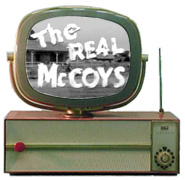

The Real McCoys (1957-1963) Precedessor to The Beverly Hillbillies. “From West Vir-gi-nee they came to stay in sunny Cal-i-forn-i-ay, ‘Ole Grandpappy Amos and the girls and boys of the family know as The Real McCoys.” Sound familiar?
The Lone Ranger (1949-1957) I didn’t miss an episode until 1954. That summer Clayton Moore was at War Memorial Stadium for an autograph session and I went. Silver was there. TLR told us, don’t get behind the horse, kids, he might kick. One kid said, “Silver wouldn’t kick me.” Clayton Moore gave him a dirty look and scowled, “He’ll kick your butt between those goal posts over there, kid, so don’t get behind him.” Disappointed in my heroes, that TLR cursed ("butt" was cursing in the 1950s) and that Silver would kick a kid, I didn’t watch many episodes after that. By the way # 1, do you remember The Lone Ranger's real name? John Reid. By the way # 2, "Kemo Sabe" in the Navajo language means "soggy shrub".
Mister Peepers (1952-1955) starred nerdy-looking and nerdy-voiced Wally Cox as a mild-mannered high school science teacher. In real life, Cox was a ladies man, and a former roommate and lifelong friend of Marlon Brando (Cox’s best friend in high school in Evanston, Illinois.)
Amos ‘N’ Andy (1951-1953) This extremely funny and well-done series is summarily
rejected by the black community. When the NAACP demanded that it be cancelled,
the cast protested because they had worked hard to erase the “Stepin Fetchit,
bug-eyed, feets-don't-fail-me-now” stereotype of black acting, and the show was
the first to offer non-stereotypical roles to black actors. It was the
first to depict black lawyers, doctors, business owners, and politicians.
It should also be noted that from 1951 to 1953 the Amos 'N' Andy Show was the
number one show on radio and was never mentioned by the NAACP. However, the
radio show, which began in the late 1920s, starred two white men speaking in
white men's version of black dialect. While the NAACP worked hard to get black
people educated, their success was not reflected in Amos 'N' Andy TV scripts which
still portrayed the 1920s dialect of an uneducated people. The television show
was considered an extension of the past, and the NAACP felt it was symbolic of
everything that stood in the way of their progress, so it had to go. Had black
people been involved in its production, and had the show more accurately
reflected the society it portrayed, Amos 'N' Andy had all the other elements to
make it one of the greatest shows of all time.
Amos---Andy, I didn't like what dat fellow tol' us jus' 'fore we got on de train.
Andy---You ain't goin' pay 'tention to ev'ything yo' heah, is yo'? I knows whut I'se doin'.
Amos---I ain't resputin' yo' word. De only thing I'se thinkin' 'bout is gittin' sumpin' to eat.
Andy---Dat ain't nuthin' to be 'fraid of. I gots thuteen dollahs.
Amos---S'pose we gits in Chicago dere an' we can't find woik right off.
Andy---Listen heah son, when we gits in Chicago, de minute we step off de train,
dey is liable to come right up to us an' grab us.
Amos---Grab us fo' whut? Put us in jail or sumpin'?
Andy---No, no, grab us an' ast us if we wants a job.
Amos---Yeh, but dat fellow say dem boys went up dere an' starved to death.
Andy---De trouble wid dem boys wus, both of 'em was like you. Dey didn't have
no sense, but wid a man like me along dat knows how to handle big bizness
men, we ain't goin' have no trouble.
Amos---I goin' let you do all de talkin' when we git up dere. You git de
jobs an' I'll do my share o' de work.
Andy---I done tol' yo' dat I'se gonna git myself a job managin'.
Amos---If I kin manage to git a job, I'll be alright.
Excerpted From Radio Episode 5, "Amos 'N' Andy Move To Chicago", March 24, 1928.
G.E. Theatre (1953-1962) Long-running dramatic anthology. Ronald Reagan hosted many episodes.
Dragnet AKA Badge 714 (1952-1970) The most famous four notes on television. Dum dum dum dum. "The story you are about to see is true. Only the names have been changed to protect the innocent." Jack Webb started the show by saying, “I’m a cop.” Policemen objected to the nickname “cop”. So in one of the earliest instances of political correctness, Webb changed it to “I carry a badge.” The show had a great sign-off when two strong, sweating hands with a metal stamp and a sledge hammer forged Webb's “MARK VII” logo into a steel plate.
You Bet Your Life (1950-1961) "Say the secret woid and a duck will come down and give you fifty dollars." Groucho Marx was one of the few comedians in our lifetime who was truly funny just adlibbing. What some people don't know is that he was also a dirty old man and many of the shows funniest moments ended up on the cutting room floor. He was careful on radio and in the early days when the show transitioned to live television, but once they started taping in the mid-1950s he let loose.
The People's Choice (1955-1958) featured grown-up child star Jackie Cooper, but the real star was Cleo the basset hound (the voice of Mary Jane Croft).
Andy Williams Show (1958-1971) Andy sang some of our hits, and his variety show was nicely done. Well, it lasted thirteen years.
Dr. Kildare (1961-1966) another of the medical drama shows competed with Ben Casey.
Hazel (1961-1966) was bland. Remember, there were only four channels.
Dean Martin Show (1965-1974) Dean probably could have made it on his voice alone, but he played his irreverent persona to the hilt and made his show a huge hit.
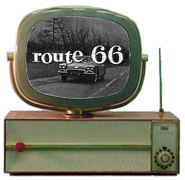

Route 66 (1960-1964) was exquisitely unique. Filmed on location all along "the mother road". Superbly written, the show starred Martin Milner as Tod Stiles and George Maharis as Buz Murdock, who drove a 1960 Corvette along Route 66 in search of adventure. They found it all right, along with mystery, romance, and trouble. Maharis contracted infectious hepatitis and had to leave the show in the middle of the third season. Glen Corbett replaced him as Linc Case but wasn’t strong enough to hold the audience and the show faded.
The Life of Riley (1949-1958) William Bendix successfully made the transition from radio.
The Red Buttons Show (1952-1955) Red Buttons was an average comedian, but an outstanding character actor. After his show ran its course, he appeared in over 20 movies. In 1958 he won an Oscar as Best Supporting Actor for “Sayonara”.
Our Miss Brooks (1952-1956) Eve Arden was everybody’s favorite high school English teacher. Also starred a very young Richard Crenna as squeaky voiced Walter Denton. We all knew a squeaky voiced Walter Denton type.
Topper (1953-1955) starred Leo G. Carroll as Cosmo Topper with Robert Sterling and Anne Jeffreys as George and Marion Kirby, two ghosts who haunted Topper's house. By 1953, studios had learned how to use blue screen to make things disappear and reappear before your very eyes, so somebody said, "Hey, I've got a great idea...."
The Adventures of Ozzie and Harriet (1952-1966) "Hi, Mom!" "Hi Dave!" "Hi Dad!" "Hi Dave!" "Hi Mom!" "Hi, Rick!' "Hi, Dad!" "Hi, Rick!" "Hi, Dave!" "Hi, Rick!"
77 Sunset Strip (1958-1964) Kookie konstantly kombing his koiffeur. The theme song, "77 sunset Strip. Snap. Snap."
Rawhide (1959-1966) Clint Eastwood as Rowdy Yates. Frankie Laine sang the theme song.
The Rebel (1959-1961) Nick Adams starred as former Confederate soldier Johnny Yuma. Johnny Cash sang the popular theme song. Nicholas Aloysius Adamshock was found dead in his Los Angeles home Feb. 8, 1968. Although the official cause of death was an overdose of sedatives, the circumstances were suspicious and the coroner never ruled the death a suicide.
Twilight Zone (1959-1965) Rod Serling’s Masterpiece. Flip a coin and it comes up heads or tails. But once in many lifetimes, it will land on its edge. It it does, you have the opportunity to enter the twilight zone. Banker Hector B. Poole buys a newspaper on his way to work and flips a coin into the paperboy’s cigar box. The coin lands on its edge. All day long he has the ability to read minds, so he knows who to lend money to and who will defraud his bank. Then, at the end of the day, he goes by the paper stand and buys an afternoon paper and flips another coin into the cigar box, knocking the first coin off of its edge. Suddenly, his ability to read minds is gone. He has visited.....The Twilight Zone.
Gomer Pyle, U.S.M.C. (1964-1970) Well, goooooolllllly.
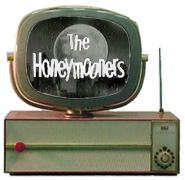

Jackie Gleason Show (1952-1970) "How Sweet It Is". "One of these days, Alice, one of these days, POW, right in the kisser." But you just knew that it would never happen. Indeed, how sweet it was.
Annie Oakley (1952-1956, mornings) Starred Little Rock’s Gail Davis as the famed sharpshooter.
Cactus Vick's Square Shooters (mid-1950s). Volmer "Cactus" Vick was a local children's entertainer who dressed in full western attire, complete with chaps and two big silver six-shooters. The live show featured an audience full of kids. The sponsor was Finkbeiner Meat Packing Company, so at the end of the show each kid got a "Square Shooter's Card", a Finkbeiner weiner (not a hot dog, just a weiner), and a ride on Cactus Vick's portable four-horse carousel, which was, itself, sponsored by Wonder Bread. He towed the carousel behind his car and, for a fee, would bring it to your birthday party.
Tommy Trent Show (1958-1963). Tommy Trent was a local country and western singer who was a regular on the Louisiana Hayride in the early 1950s. With his band, the Dixie Mountaineers, he liked to showcase local talent, and one of his regulars was billed as "Little Johnny Tisdale", who was related to Bill Tisdale, who owns, or owned, an Auto Repair Shop on Mabelvale Pike. Tommy Trent had moderate success in Arkansas. For a while, he owned a country music dance hall called Tommy Trent's Fun Barn. I have it on good authority that he was a brother-in-law of Lanny Brannon (Class of 1960). Tommy Trent was living in Bryant when he died in 2003 at the age of 79.
Mister Wizard (1951-1965, mornings) Don Herbert could make you a real nightlight. Once on the Johnny Carson show he plugged 110 volts into each end of a dill pickle and the thing glowed yellow. Kids, don't try this at home.
Have Gun, Will Travel (1957-1963) Wire Paladin, San Francisco. I always thought he needed more of an address than that. San Francisco is a big place.
Gunsmoke (1955-1975) Matt, Kitty, Doc, Chester, Festus, Quint, and that poor cowboy who Matt shot at the beginning of every show.
Beat the Clock (1950-1958) not sure how this one lasted eight years, except that during a lot of that time there was only one channel, so it was take it or leave it. Original host Bud Collyer bailed out when he was offered the hosting job on “To Tell The Truth”.
The Jimmy Durante Show (1954-1956) Jimmy Durante was an old Vaudevillian who did better as a guest of other shows than with his own because his style was overbearing. We were so starved for entertainment that it was unusual for even a bad show to last only two years, but this one did just that.
Your Show of Shows/Caesar’s Hour (1950-1958) with Sid Caesar, Imogene Coca. Caesar and Coca were two comic geniuses, and each show was 90 minutes of non-stop laughter. Some of the show’s writers were Mel Brooks, Woody Allen, Carl Reiner, and Neil Simon.
G.E. College Bowl (1959-1970) was an upscale version of “Quiz Kids” which had aired in 1949. College Bowl was a “serious” quiz show, from which would evolve Jeopardy and others like it.
Rocky the Flying Squirrel (1959-1973) with voices June Foray as Rocky, Natasha and
Nell Fenwick; Bill Scott as Bullwinkle, Mr. Peabody and Dudley Do-Right; Paul Frees
as Boris Badinov; Hans Conreid as Snidely Whiplash; Walter Tetley as Sherman; Charles
Ruggles as Aesop; William Conrad as the narrator; and Edward Everett Horton as the
narrator of Fractured Fairy Tales.
Rocky: “Bullwinkle, it says here that for you to inherit the fortune, you have to spend
the weekend in the ancestral home, Abominable Manor.”
Bullwinkle: “That's no problem. I've been living in an abominable manner all my life.”
The Defenders (1961-1965) Early antithesis of today's Law and Order.
Gale Storm Show (1956-1960) Ms. Storm’s replacement show after Wednesday's “My Little Margie” ran its course.
Your Hit Parade (1950-1959) (after making a successful transition from radio). Top seven hits of the week sung by a cast of regulars. Rock and Roll killed ”Your Hit Parade”. The thought of Snooky Lanson butchering “Hound Dog” and “Blue Suede Shoes” was enough to send the teenagers out of the room.
The Lawrence Welk Show (1955-1982) Who watched this show, anyway?
Leave It To Beaver (1957-1963) More famous than the Beav is June Cleaver, who performed her daily housework dressed to the hilt, including high-heels and jewelry.
Perry Mason (1957-1966) The original canned whodunit. The best part of the show was Perry’s (Raymond Burr) jousts with prosecutor Hamilton Burger. When William Talman (who played Burger) was fired after he was arrested at a pot-smoking nudist party (he was years ahead of his time) the courtroom scenes lost a lot of their magic.
Wanted Dead or Alive (1958-1961) Steve McQueen as Josh Randall the bounty hunter. He carried a sawed off rifle a la “The Rifleman”, but unlike Chuck Connors, he didn’t hesitate to use it.
Major League Baseball Game Of The Week (mid-1950s on CBS). Notable because the announcer was Hall Of Fame pitcher Dizzy Dean (born Jay Hannah Dean in Lucas, Arkansas). His homespun wisdom ("It ain't what it used to be, Granny. But what the hell is?") and vast personal database of baseball lore perked up what could have been an otherwise boring afternoon on television. Dizzy was for real. When he held up a bottle of Falstaff Beer and told you how good it was, there was no doubt in your mind that he drank every bottle he could get his hands on. And when he sang "Wabash Cannonball" you knew he had his hands on several in the announcer's booth. A lot of Arkansans were mortified because nobody could butcher the King’s English like Dizzy. Assailed for his grammar, Dizzy shot back, “Let the teachers teach English an’ I’ll teach baseball. As for sayin’ ‘Rizzuto slud into second’, slid just ain’t natural. Sounds silly to me. Slud is somethin’ more than slid. It means slidin’ with great effort. And there ain't nothin' wrong with "ain’t". There is a lot of people in the United States who say ‘isn’t’, and they ain’t eatin’.” When NBC and Curt Gowdy took over MLB Game of the Week in 1966, ratings plummeted.


Steve's Show (1957-1965). Six days a week. It began in 1957 on KTHV, Channel 11. Steve Stephens’ one-hour show preceded (locally, that is), and in our minds transcended, Dick Clark’s American Bandstand. We didn’t personally know any of the kids on American Bandstand, but we knew most of them on Steve’s Show. A Little Rock production company called Morning Star Studio has made a movie, “Steve’s Show”, that chronicles the phenomenon. Look for it. Steve Stephens, who is still around, was inducted into the Arkansas Entertainer’s Hall of Fame October 3, 2003.
American Bandstand (1957-1987). Daily until 1963, then Saturday only. The guest stars all lip-synched their songs, but we knew it, and they knew we knew it, so it didn’t matter. We watched to hear the music, see the latest dances, and to see how they voted for the new releases, some of which hadn’t yet aired in Little Rock.
Western Theater at 4:00 daily. Don “Red” Barry, Bob Steele, Lash Larue, Johnny Mac Brown, William Boyd (as Hopalong Cassidy), Tim McCoy (Whose brother owned a western store in Springdale)
The original music videos. Just before “Western Theater” there was about ten minutes of slack time, so they showed music videos like Peggy Lee (“Fever”), The Ink Spots (“If I Didn’t Care”), Tex Ritter (“Smoke, Smoke, Smoke That Cigarette”), and The Harmonicats (“Peg ‘O My Heart”). MTV would croak if they had to show those today.
The Little Rascals. Syndicated. Daily, after school. Like the old music videos, their skits were used mostly as a filler between regularly scheduled shows.
Betty Fowler, local jazz pianist legend, former Miss Arkansas, and music director for the Miss Arkansas Pageant, had a daily children's variety show on KATV Channel 7 called "Betty's Little Rascals" from 1954 to 1958.
There was also a show on Channel 7 called "Phydeaux And His Friends" featuring a sock puppet (actually a clay and paper mache puppet) dog named Phydeaux. It was political satire, which explains why I don't remember much about it. Orville Faubus once appeared as a guest on the show. It wasn't produced in the KATV studios like all the other local shows. Instead, George and Rosemary Fisher produced it in the basement of their home on North Taylor and delivered the films to the Channel 7 studios for airing. If the name sounds familiar, it's because in 1972 George Fisher began a twenty year career as the political cartoonist for the Arkansas Gazette, and his trademark was hiding Rosemary's nickname, Snooky, somewhere in his cartoons.
The daily soaps. The term "soap opera" was coined in the early days of radio because the shows were sponsored by the major soap companies like Lever Brothers. Some that made the small screen were Guiding Light (1952-), As the World Turns (1956-), and Edge of Night (1956-1984).
The Today Show (1952-) was first hosted by Dave Garroway.
The Tonight Show with Steve Allen (1954-57), Jack Paar (1957-62), and Johnny Carson (1962-92). Steve Allen was light on conversation and heavy on comedy and skits, and the pressure to keep it up and be good at it night after night was too great. Jack Paar (who once quit the show when NBC censors wouldn’t let him say “water closet” on the air) was heavy on conversation and light on comedy. Johnny Carson blended the two styles perfectly and that was the secret to his success. In his last years Steve Allen, upset that Bevis and Butthead were able to say "That pisses me off" on MTV, spent his time campaigning to bring back the standards of decency of the 1950s. Obviously he failed.
Highway Patrol (1955-1959). Syndicated) (late at night, just before sign-off) starred Broderick Crawford, who said he cancelled the show when he ran out of crimes. He should be around today. Ten-four?
The Huckleberry Hound Show (1958-1962) Those of us who grew up watching Walt Disney, Walter Lantz, Merrie Melodies and the other classics at 24 frames per second, never quite got used to Hanna Barbera’s 12 frames per second cartoons, no matter how cleverly done. But in the world of tight weekly production schedules, something had to go, and in this case what went was the other 12 frames per second.
Yogi Bear (1961-1975) spun off from Huckleberry Hound and ripped off Art Carney’s “Honeymooners” Ed Norton character.
Name That Tune (1953-1997). Syndicated. Contestants tried to guess songs from snippets. The fewer snippets they heard before they guessed the song, the more they’d win, which wasn’t much anyway. Best part of the game was bid-a-note. “I can name that tune in one note.” The songs were sung by real people, not recordings. One of the singers was Kathy Lee Johnson, later Gifford. I loved to play along with this game.
Howdy Doody (1947-1960) (weekday mornings) Cowboy Bob Smith asked, "Say kids, What time is it?" and the peanut gallery responded with, "It's Howdy Doody time!” Clarabelle the Clown had three incarnations, but the first incarnation was Bob Keeshan. He was fired in 1953, but went on to create "Captain Kangaroo", which would eclipse Howdy Doody.
Mickey Mouse Club (1955-1959). Daily, after school. "Who's the leader of the club that's made for you and me? M-I-C-K-E-Y M-O-U-S-E. Mickey Mouse...etc."
Captain Kangaroo (1955-1985) (weekday mornings) You had to watch to see what clever ruse Bun E. Rabbit would use that day to screw the Captain out of his carrots.
The Price is Right (1957-). Syndicated. Does it never end?
Queen For A Day (1956-1962) (Daytime). The most politically-incorrect show of all time. Several miserable, poverty stricken ladies competed for prizes and the title QFAD went to the one who was deemed the worse off. The QFAD got the new refrigerator she needed and the others went home losers. I have a friend whose mother was QFAD. I suppose if you were the winner the show wasn’t so bad.
The Shari Lewis Show (1960-1963) with sock puppets Lamb Chop and Charlie Horse.
Soupy Sales (1955-1962). Syndicated. Daily kids show. Famous for throwing pies. His biography brags that he threw 19,000 pies in his career. His show was canceled when he told kids to "go to Daddy's wallet and get those little green pieces of paper with pictures of George Washington, Benjamin Franklin, Abraham Lincoln, and Thomas Jefferson on them, send them to me, and I'll send you a postcard from Puerto Rico."
Sea Hunt (1958-1961). Syndicated. Starred Lloyd Bridges as diver Mike Nelson who fought the bad guys, giant octopi, Manta rays and other enemies while wearing scuba gear. It was called Sea Hunt but the 100 or so episodes were filmed at Silver Springs Water Park near Ocala, Florida. In Little Rock it was the last show before sign-off.
Army-McCarthy Hearings April 22 to June 17, 1954. Landmark gavel-to-gavel television broadcast of United States Government proceedings. Senator Joseph McCarthy might have continued his charade for many more years if these hearings hadn’t been televised. But once the public saw what a complete blithering idiot he was, his career was over. He was censured by the United States Senate in December of 1954, and died in office May 2, 1957.
Fractured Flickers (1963-1964). Syndicated. Vintage movie clips edited for maximum fun. Hosted by Hans Conreid. Take-off from “Fractured Fairy Tales” on the Rocky and Bullwinkle show.
Four Star Playhouse (1952-56). Syndicated. Dick Powell (who was born in Mountain View, Arkansas) , Ida Lupino, David Niven, and Charles Boyer. Great drama as only great actors like these four could present it. Some of the scriptwriters were Star Trek originator Gene Roddenberry, an unknown named Aaron Spelling, and Blake Edwards.
I Led Three Lives (1953-1956). Syndicated. The true story of Herbert A. Philbrick (Richard Carlson), who for nine years lead three boring lives - average citizen, member of the Communist Party and counterspy for the F.B.I. That’s three, right?
Coronation of Queen Elizabeth (June, 1953) as the young princess was crowned clad in her royal purple and regal red diamond-encrusted regalia, we watched in living black and white.
The trial in Israel of Adolph Eichmann (summer, 1961). Eichmann sitting in a glass box.
Lee Harvey Oswald killed (11:21 A.M., November 24, 1963). Many of us watched as Jack Ruby fired the fatal shot on a nationwide live broadcast.
Funeral of President John F. Kennedy (November 24 and 25, 1963) drew the largest television audience in history, with 93 percent of all TV sets tuned to the event.
CBS Evening News (1948-) with Douglas Edwards from 1948 to 1962, and Walter Cronkite from 1962 to 1981. And that’s the way it was.
